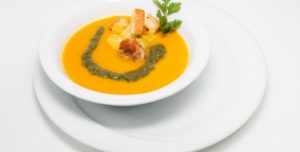There’s a good reason to put dry beans, peas, lentils, and soya into the spotlight. Unfortunately, they are often seen as ‘poor man’s food and can take longer to cook. We should be eating them, along with a variety of foods, at least four times a week, and yet, many of us hardly include them in our diets. There’s not enough awareness of how they contribute to healthy lifestyles or how to use them well to make delicious meals.
Beans, peas, and lentils provide exceptional nutritional value for money, having a high micronutrient to price ratio. What’s more, they improve soil fertility, are water-efficient, and have a smaller carbon footprint, promoting environmental sustainability.
Dry beans, peas, lentils, and soya are:
- Low in fat, high in fibre, and have a low glycaemic index.
- Naturally cholesterol-free.
- Naturally gluten-free.
- A good source of plant protein, providing twice as much protein as wheat.
- Good sources of vitamins such as folate and minerals like potassium and calcium.
According to research, including dry beans, peas, lentils, and soya regularly in your diet, along with other health-promoting behaviours, contributes to better health, helping to improve blood pressure and the maintenance of a healthy weight, reducing the risk for conditions such as diabetes, heart disease, and strokes.
When it comes to cooking, pulses are wonderfully versatile and can be incorporated into the diet in many ways. Pulses are excellent when used as the main ingredient in a vegetarian meal or can be used as an affordable way to extend a meat stew or a bolognaise sauce. Cook up a large batch, portion, and freeze to make a quick meal like soup or a bean salad.
Some people experience bloating and gas because of eating beans. Prevent this by starting with small amounts to build up one’s tolerance over time and soak dry beans before cooking.
Cooking tips for pulses:
- Tinned chickpeas, beans, and lentils are just as nutritious as the dried versions. Stock up on tinned pulses for quick emergency meals, e.g., chickpeas and tuna, mince with tinned lentils, or add any tinned beans to your favourite salad.
- Soak beans in the morning (before cooking in the evening) using boiled water or use canned varieties to cut down on cooking time.
- Add salt only at the end of the cooking process. Adding it at the beginning increases the cooking time and hardens the skins.
- Soaking and rinsing dry beans before cooking and rinsing canned beans in water can help reduce hard-to-digest components, which could cause flatulence in some individuals.
- Rinse tinned legumes well before serving, as this increases your tummy’s tolerance to beans, lentils, and chickpeas.
Great, easy snack ideas for pulses:
- Drain a tin of chickpeas and place it in a roasting pan. Drizzle with olive oil, cumin, paprika, and black pepper. Roast for around 40 minutes for a quick and easy roasted chickpea snack. Store in an airtight container for a quick snack on the go.
- Use pulses to make tasty dips, e.g., pureed chickpea and butternut, or pureed white beans flavoured with vegetable oil, garlic, lemon juice, and a sprinkling of salt and herbs. Enjoy these dips with veggie sticks or crackers.
- Keep it even simpler and mash or blend pulses with garlic, herbs, and spices for a delicious, healthy spread or dip.
- Lentils are quick and easy to cook with brown rice, pearled barley, or crushed wheat.
Pulses should be a regular part of a family’s healthy eating plan and can be used in a wide variety of dishes. Aim to include them in your diet at least four times a week.
Source:












